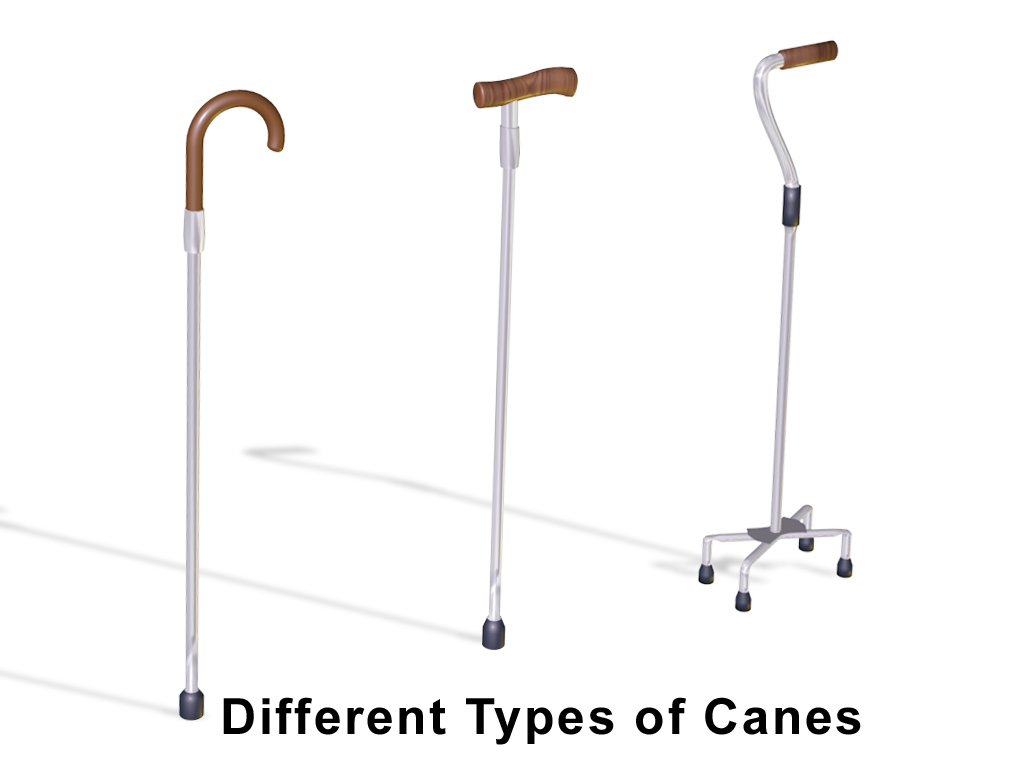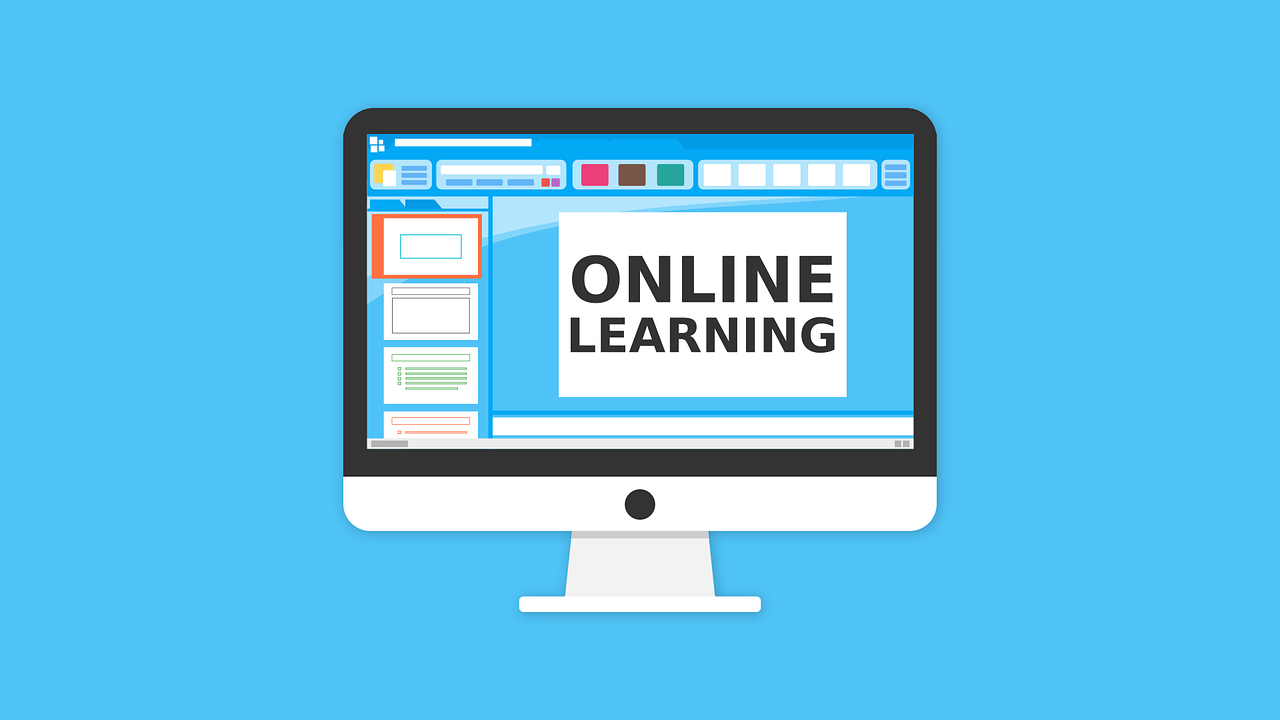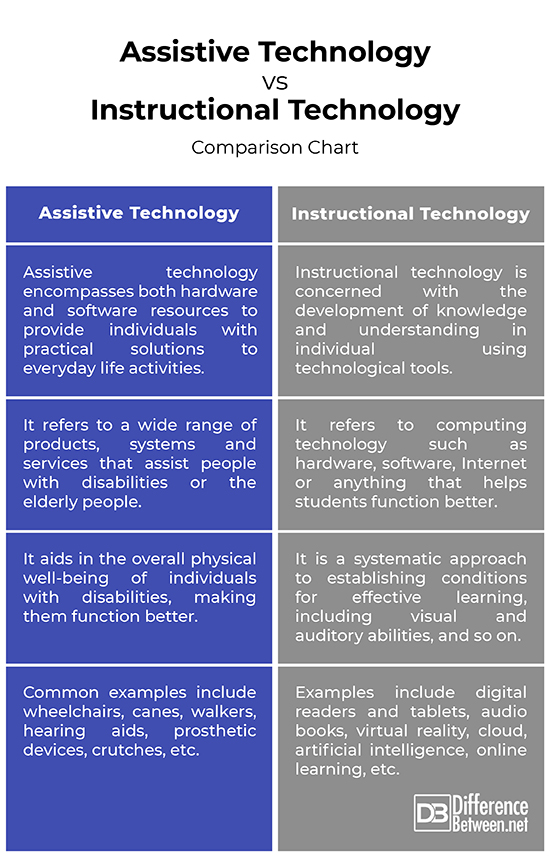Difference Between Assistive Technology and Instructional Technology
We live in a world where technology continues to be a major driving force behind innovation. Innovation is more than just a new technological development or breakthrough; in fact, people drive innovation. People are the advocates of new products and innovative technologies. Two such people-driven technologies are Assistive Technology and Instructional Technology. Well, there is a thin line between the two technologies but the primary purpose is same – to improve the functional capabilities of individuals with disabilities, and in case of instructional technology, people with learning disabilities, especially students.

What is Assistive Technology?
Assistive technology refers to a wide range of products, systems and services that assist people with disabilities or the elderly people. When you call somebody only to be answered by their answering machine saying “please leave a message…” this is a kind of assistive technology. When you see a disable person on a wheelchair or someone wearing a hearing aid or some kind of prosthetic, these are all examples of assistive technology. So, any device or service that assists with daily activities of people, particularly people with disabilities or the elderly population, is a type of an assistive technology. Assistive technology solutions are great resources that address a wide range of functional problems, such as walking, eating, hearing, driving, talking, etc. Assistive technology encompasses both hardware and software resources providing individuals with practical solutions to everyday life activities.

Instructional Technology
Technology plays a fundamental role in modern teaching methods. In fact, technology has revolutionized the teaching scene over the past couple of years. The learning programs have also been greatly affected by it. Instructional technology proves to be a great resource for learning for years, but what exactly is Instructional Technology? Instructional technology, as the name suggests, is any technology or resource that aids in learning. Instruction is mainly concerned with the development of knowledge and understanding in an individual. Instructional technology has evolved from a field to a profession. According to the 1994 definition, Instructional technology is a field of study as well as practice. However, the term ‘instructional’ is more appropriately describes the function of technology. It is often used synonymously with educational technology. In fact, Instructional technology can be defined as a subset of ‘Educational Technology’ based on the context that instruction is a subset of education. The goal is to create effective learning experiences using technological tools.
Difference between Assistive Technology and Instructional Technology
Definition
– According to the WHO, Assistive technology can be defined as devices and technologies whose primary purpose is to maintain or improve an individual’s functioning and independence to facilitate participation and to enhance overall well-being. In simple terms, assistive technology refers to a wide range of products, systems and services that assist people with disabilities or the elderly people. Instructional technology, on the other hand, can be defined as a subset of educational technology that is concerned with the development of knowledge and understanding in an individual using technological tools. It is the use of hardware and software to facilitate effective learning.
Role
– Assistive technology is any device or tool that aids in the overall physical well-being of individuals with disabilities, making them function better. For example, assistive technology can help students with physical impairments or any other cognitive problems function just as well as other students in the classroom. Assistive technology plays a fundamental role in learning, assisting those with learning disabilities. Instructional technology plays a crucial role in learning, making it more engaging and effective. It is a systematic approach to establishing conditions for effective learning, including visual and auditory abilities, speech comprehension abilities, and so on.
Examples
– Assistive technology encompasses both hardware and software resources providing individuals with practical solutions to everyday life activities. Common ones include wheelchairs, canes, walkers, hearing aids, prosthetic devices, crutches, and so on. Other examples of assistive technology include screen optimizer, speech recognition, audio player, digital recorder, word processors, visual search engine, etc. Some common yet innovative examples of instructional technology are digital readers and tablets, audio books, virtual reality, cloud, artificial intelligence, online learning, computer-based learning, social learning, active learning, video conferencing software, virtual classroom, etc.
Assistive Technology vs. Instructional Technology: Comparison Chart

Summary
While the two technologies are often interrelated, there is a fine line between the two. Assistive technology is mainly intended for individuals with disabilities or the elderly population, but also proves to be a great resource for students with physical impairments or secondary health conditions. Instructional technology is more or less associated with educational technology that is developed for students with learning disabilities, such as visual or hearing impairments, speech comprehension conditions, and so on. It is a systematic approach to establishing conditions for effective learning. Assistive technology can be any technology, such as a software program, or a product that can be used to improve the functional capabilities of individuals with disabilities. Instructional technology can be used in the same context but more geared towards students with learning disabilities.
- Difference Between Caucus and Primary - June 18, 2024
- Difference Between PPO and POS - May 30, 2024
- Difference Between RFID and NFC - May 28, 2024
Search DifferenceBetween.net :
Leave a Response
References :
[0]Rather, A. R. Essentials of Instructional Technology. New Delhi, India: Discovery Publishing House, 2004. Print
[1]Seels, Barbara B. and Rita C. Richey. Instructional Technology: The Definition and Domains of the Field. North Carolina, United States: Information Age Publishing, 2012. Print
[2]Reilly, Richard B. et al. Assistive Technology - Shaping the Future. Amsterdam, Netherlands: IOS Press, 2003. Print
[3]Suryadevara, Nagender K. and Subhas C. Mukhopadhyay. Assistive Technology for the Elderly. Massachusetts, United States: Academic Press, 2020. Print
[4]Image credit: https://cdn.pixabay.com/photo/2020/06/06/14/50/online-5266843_1280.png
[5]Image credit: https://upload.wikimedia.org/wikipedia/commons/1/10/Home_Care_Cane_Types.png
